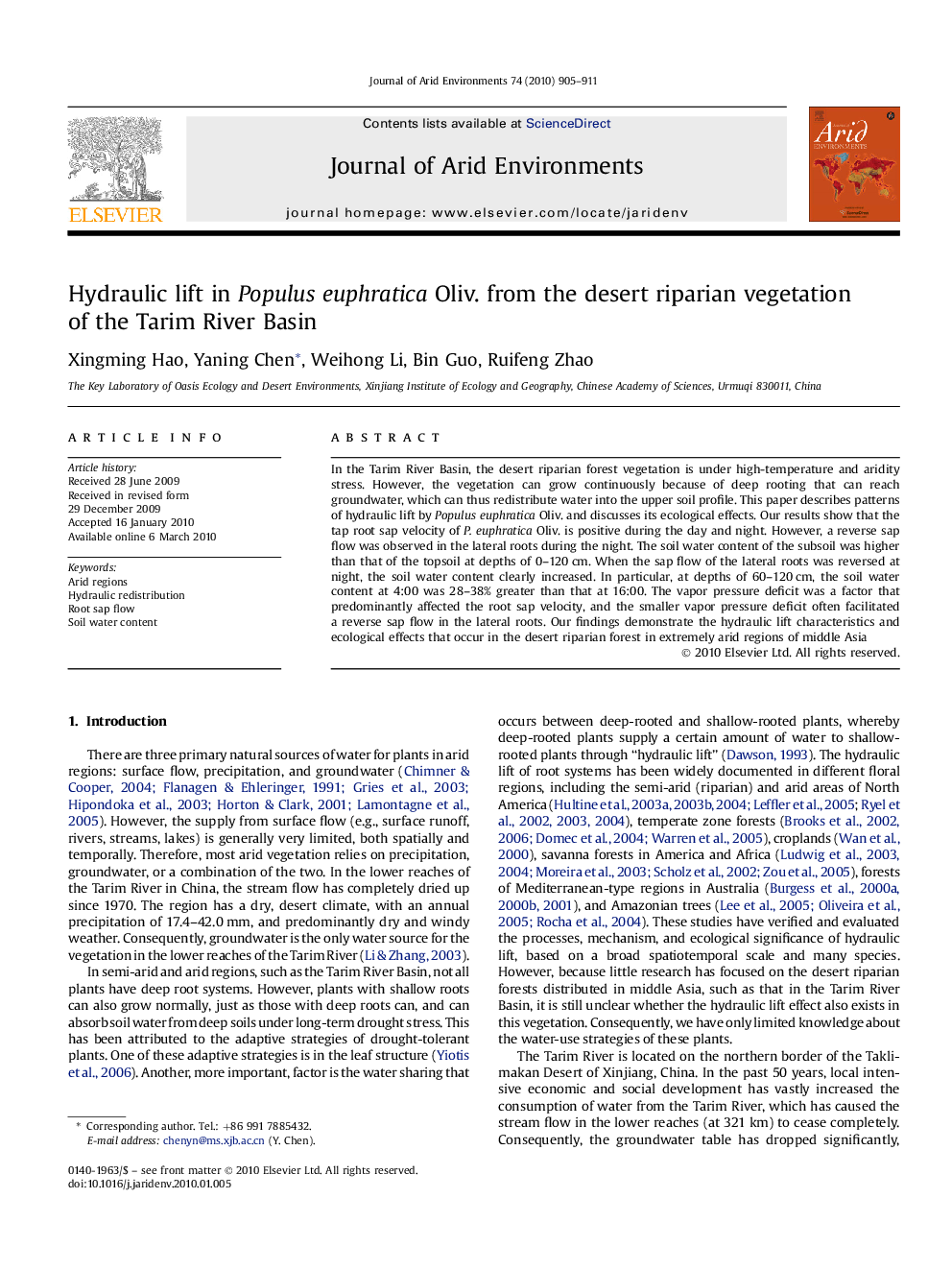| Article ID | Journal | Published Year | Pages | File Type |
|---|---|---|---|---|
| 4394023 | Journal of Arid Environments | 2010 | 7 Pages |
In the Tarim River Basin, the desert riparian forest vegetation is under high-temperature and aridity stress. However, the vegetation can grow continuously because of deep rooting that can reach groundwater, which can thus redistribute water into the upper soil profile. This paper describes patterns of hydraulic lift by Populus euphratica Oliv. and discusses its ecological effects. Our results show that the tap root sap velocity of P. euphratica Oliv. is positive during the day and night. However, a reverse sap flow was observed in the lateral roots during the night. The soil water content of the subsoil was higher than that of the topsoil at depths of 0–120 cm. When the sap flow of the lateral roots was reversed at night, the soil water content clearly increased. In particular, at depths of 60–120 cm, the soil water content at 4:00 was 28–38% greater than that at 16:00. The vapor pressure deficit was a factor that predominantly affected the root sap velocity, and the smaller vapor pressure deficit often facilitated a reverse sap flow in the lateral roots. Our findings demonstrate the hydraulic lift characteristics and ecological effects that occur in the desert riparian forest in extremely arid regions of middle Asia
